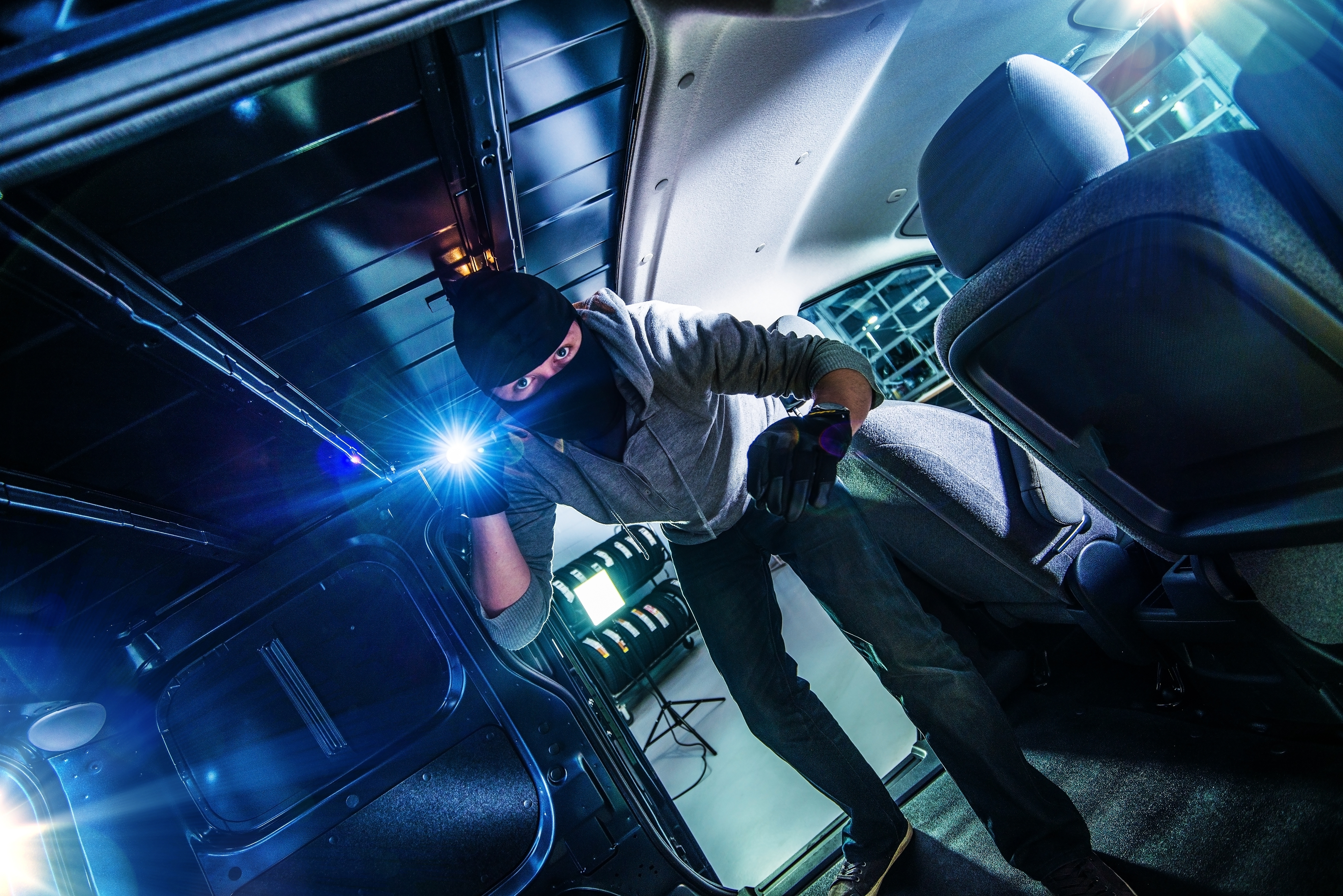
Miranda Blake
Tips om je voertuig te beveiligen: Bescherm je truck tegen diefstal
Gemaakt: 14-11-2024
•
Bijgewerkt: 14-11-2024
Transportbedrijven in het Verenigd Koninkrijk en Europa kunnen het risico op diefstal van voertuigen en vracht aanzienlijk verkleinen. Het beschermen van de vrachtwagen gaat niet alleen over het beveiligen van het voertuig zelf; het omvat een holistische benadering die technologie, training, betrokkenheid van de gemeenschap en proactieve planning omvat. Met de juiste maatregelen kunnen wagenparkbeheerders de veiligheid van chauffeurs en de integriteit van bedrijfsmiddelen waarborgen en zo een veilige omgeving voor hun activiteiten creëren.
Wat bestuurders moeten doen
Het voertuig beveiligen
Verbeter de beveiliging van je voertuig door verschillende hulpmiddelen te gebruiken, zoals hangsloten, verzegelingen met een uniek nummer en kiepkoorden. Deze moeten onmiddellijk na het laden worden aangebracht om een extra beschermingslaag tegen ongeoorloofde toegang te creëren.
Grondige controles zijn essentieel. Neem na elke stop even de tijd om je vrachtwagen en de lading te inspecteren. Zoek naar tekenen van manipulatie of verdachte activiteiten. Waakzaamheid is essentieel om diefstal te voorkomen.
Documentatie
Houd een uitgebreide checklist voor voertuigbeveiliging bij. Deze moet gemakkelijk beschikbaar zijn voor controle door grenswachters of andere autoriteiten wanneer dat nodig is. Dit toont niet alleen uw inzet, maar helpt ook bij het onderzoeksproces in geval van diefstal.
Veilige locaties
Kies parkeerplaatsen die goed verlicht en druk zijn. Gebieden met veel voetgangers en bewakingscamera's zijn minder aantrekkelijk voor dieven. Maak waar mogelijk gebruik van aangewezen beveiligde parkeerplaatsen die zijn uitgerust met omheiningen en geavanceerde bewakingssystemen of beveiligingspersoneel. Deze locaties bieden een extra veiligheidslaag. Kies voor 's nachts parkeren plaatsen die verlicht en bewaakt zijn.
Zoek veilige parkeerplaatsen voor vrachtwagens op uw transitroute met behulp van de SNAP-kaart.
Vrachtwagenchauffeur in het donker](https://prodsnapstorage.blob.core.windows.net/public-news/96bdaa93-31e8-48ed-9167-3c107481ccaa-Truck%20driver%20in%20the%20dark.jpg)
Technologie en apparatuur
De integratie van geavanceerde technologie kan de veiligheid van je voertuig aanzienlijk verbeteren. Rust je vrachtwagen uit met moderne systemen, zoals GPS-tracking, startonderbrekers en paniekalarmen. Deze schrikken niet alleen diefstal af, maar helpen ook bij het terugvinden als er een incident gebeurt.
Routeplanning
Bovendien kan het effectief uitstippelen van je ritten je helpen om risicogebieden te vermijden. Gebruik software waarmee je leveringsroutes kunt uitstippelen en tegelijkertijd bekende diefstalhaarden kunt vermijden. Door telematica- en gps-technologie te implementeren om je voertuig in realtime te volgen, kun je de locatie volgen en ervoor zorgen dat je je aan de geplande ritten houdt.
Wat wagenparkbeheerders moeten doen
Beveiligingsprotocollen en -systemen
Een goed gedefinieerde set beveiligingsprotocollen is essentieel voor alle bestuurders. Als [wagenparkbeheerder] (https://snapacc.com/fleet-operators/) kunt u uitgebreide schriftelijke richtlijnen opstellen met gedetailleerde veiligheidsmaatregelen die ze moeten volgen. Een dergelijke aanpak zorgt ervoor dat iedereen op één lijn zit wat betreft veiligheidspraktijken.
Je moet chauffeurs trainen in het effectief gebruik van de systemen die in hun vrachtwagens geïnstalleerd zijn. Vertrouwdheid met deze apparaten kan de effectiviteit ervan vergroten. Het is ook een goed idee om ze voor te lichten over mogelijke bedreigingen en het belang van waakzaamheid. Ze moeten op de hoogte zijn van veelgebruikte tactieken van dieven en weten hoe ze adequaat moeten reageren.
Door je trucks in optimale conditie te houden, verklein je het risico op defecten die tot diefstal kunnen leiden. Implementeer een proactief onderhoudsschema om ervoor te zorgen dat je voertuigen altijd in goede staat verkeren. Regelmatige controles kunnen mechanische storingen voorkomen die je vrachtwagens kwetsbaar maken.
Communicatie en gemeenschap
Het opzetten van duidelijke communicatiekanalen is essentieel voor effectief beveiligingsmanagement. Zorg voor een open communicatie tussen chauffeurs, centralisten en beveiligingspersoneel. Hierdoor kunnen verdachte activiteiten of problemen met voertuigen onmiddellijk worden gemeld. Moedig chauffeurs aan om zich tijdens hun dienst regelmatig te melden.
Samenwerking met de lokale gemeenschap kan uw beveiligingsmaatregelen verbeteren. Werk samen met andere bedrijven en de plaatselijke politie om informatie over mogelijke bedreigingen te delen. Een collectieve aanpak kan het bewustzijn vergroten en leiden tot effectievere strategieën voor misdaadpreventie. Neem deel aan gemeenschapsinitiatieven die zich hierop richten - het opbouwen van relaties kan een ondersteunend netwerk creëren dat helpt bij het beschermen van je bezittingen.
Reactieplannen
Een solide plan voor noodgevallen kan de gevolgen van diefstal beperken. Ontwikkel duidelijke protocollen voor het reageren op incidenten. Hierin moeten stappen staan voor het melden van een incident, het contact opnemen met de politie en het inlichten van je verzekeringsmaatschappij. Zorg ervoor dat alle bestuurders hiermee bekend zijn - ze moeten weten hoe ze snel en effectief kunnen handelen.
Situatiebewustzijn
Chauffeurs trainen om zich bewust te zijn van hun omgeving kan diefstal voorkomen. Leer ze hoe ze verdachte activiteiten rond hun voertuigen kunnen herkennen en moedig ze aan om op hun instinct te vertrouwen en ongewone voorvallen te melden. Benadruk bovendien dat persoonlijke veiligheid belangrijker is dan lading. Als ze geconfronteerd worden met een dief, moeten ze gehoorzamen en het incident melden aan de autoriteiten zodra dat veilig kan.
Brandstoftransacties volgen met SNAP
We bieden een slim betaalsysteem dat automatisch brandstoftransacties registreert en bijhoudt. Wanneer chauffeurs hun voertuigen tanken op een van de meer dan 3.500 locaties in het Verenigd Koninkrijk, tonen ze gewoon hun SNAP Fuel-kaart om de transactie te betalen, waardoor contant geld of creditcards niet meer nodig zijn en het proces wordt gestroomlijnd.
Het systeem voegt automatisch elke brandstoftransactie toe aan de rekening die is gekoppeld aan het kenteken van het voertuig. Door deze automatisering hoeven chauffeurs niet langer handmatig bonnetjes te verzamelen en in te dienen, waardoor de administratieve lasten en de kans op fouten afnemen.
Wagenparkbeheerders ontvangen maandelijks gespecificeerde facturen met een gedetailleerd overzicht van de activiteiten voor al hun voertuigen, waardoor het brandstofverbruik en de uitgaven voor het hele wagenpark gemakkelijk kunnen worden gecontroleerd.
SNAP Fuel kan worden geïntegreerd met andere diensten van SNAP Account, waardoor wagenparkbeheerders niet alleen brandstoftransacties, maar ook parkeer- en wasdiensten kunnen volgen via één account, waardoor een volledig overzicht van activiteiten en uitgaven wordt verkregen. Meer informatie over SNAP Fuel vindt u hier.



